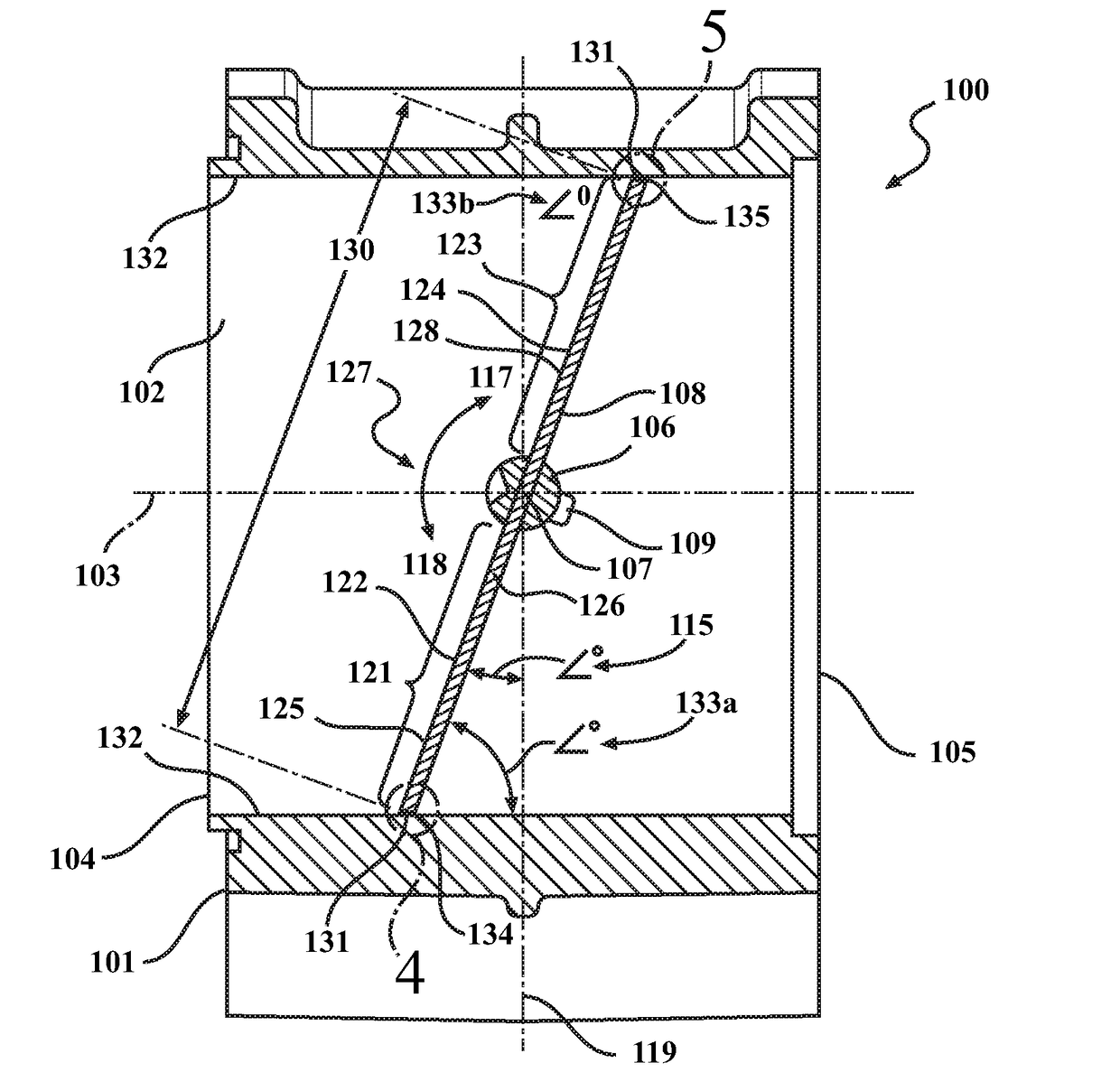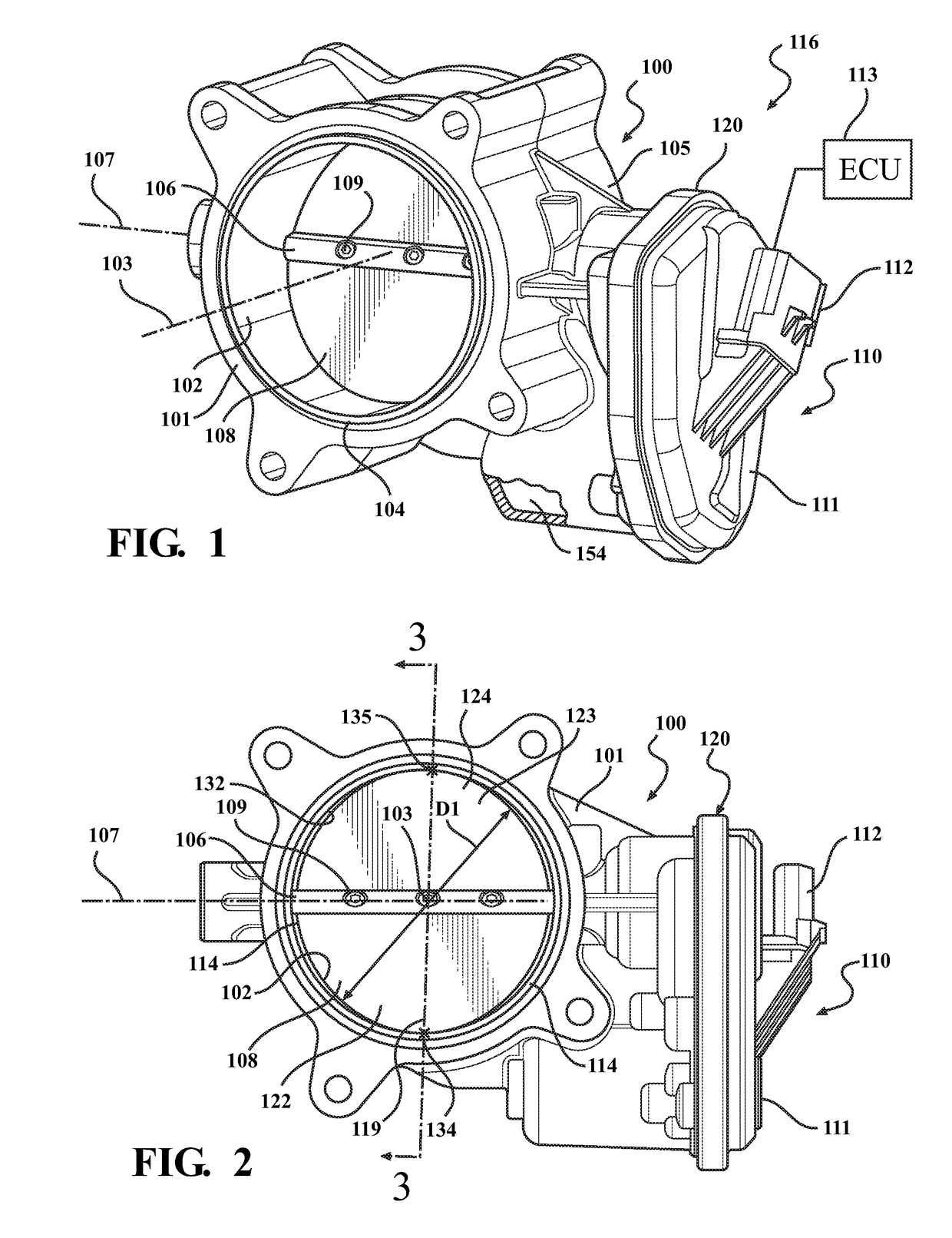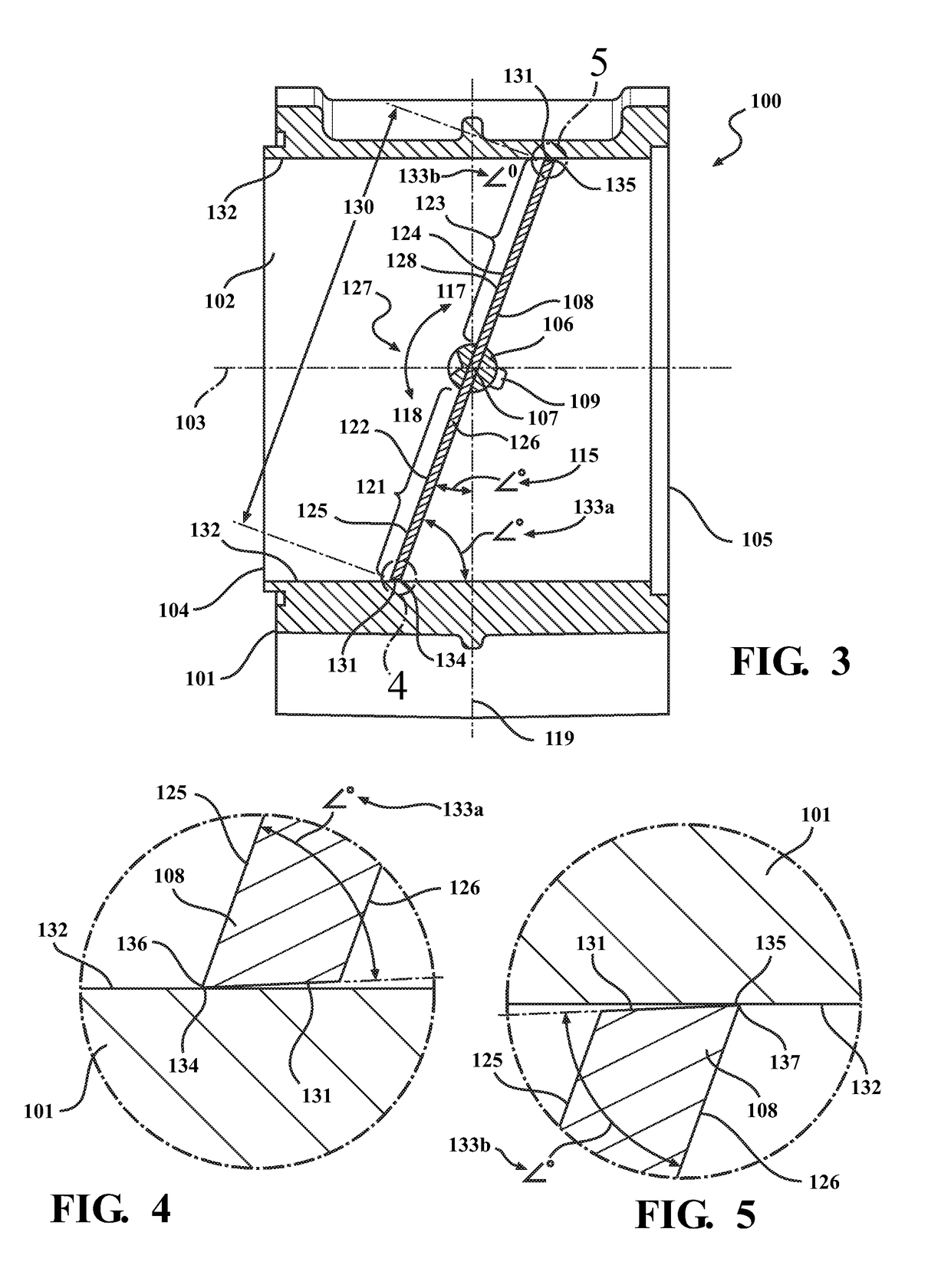Valve Assembly With Anti-Seizing
a valve assembly and valve plate technology, applied in the field of valve assemblies, can solve the problems of valve plate seizing in the bore of the valve assembly, increasing the potential for seizing, and actuators not having sufficient available torque to overcome this condition, so as to reduce the effect of wedging effect and easy manufacturing
- Summary
- Abstract
- Description
- Claims
- Application Information
AI Technical Summary
Benefits of technology
Problems solved by technology
Method used
Image
Examples
first embodiment
[0046]Referring to FIGS. 10-18, a first embodiment, according to the present invention, of the valve assembly 100 is shown. Like parts of the valve assembly 100 have like reference numerals increased by an apostrophe. In this embodiment, the valve assembly 100′ may include an actuator 110′ and be used in a system 116′. The actuator 110′ may include an electrical drive device 154′ similar to the electrical drive device 154 of the actuator 110. The electrical drive device 154′ may provide a rotational force in response to being powered by an electrical control signal applied to the actuator 110′. The actuator 110′ and system 116′ have a design, operation, and function similar to the actuator 110 and system 116 previously described herein and will therefore not be restated, however, it is to be understood that the design, operation, and function of the actuators 110, 110′ and systems 116, 116′ may be directly applied to the present invention and the valve assembly 100′ to be described ...
second embodiment
[0058]Referring to FIGS. 19 and 20, a second embodiment, according to the present invention, of the valve plate 108′ is shown. In this embodiment, the valve plate 108′ includes the first surface 125′, the second surface 126′, and the first circumferential surface 131′. The second circumferential surface 142 is a curved or arcuate shaped and extends from the first and second surfaces 125′, 126′ and terminates at the first circumferential surface 131′. The second circumferential surface 142 provides the gap 139 to avoid the contact with the bore 102′. The second circumferential surface 142 also terminates at the first circumferential surface 131′ and provides a surface 141 that makes contact with the surface 132′ of the bore 102′ and inhibits seizing of the valve plate 108′ in the bore 102′ as previously described herein.
third embodiment
[0059]Referring to FIGS. 21 and 22, a third embodiment, according to the present invention, of the valve plate 108′ is shown. In this embodiment, the valve plate 108′ includes the first surface 125′, the second surface 126′, and the first circumferential surface 131′. The second circumferential surface 149 includes a partially round or arcuate surface 143 extending from the first or second surfaces 125′, 126′ and a straight or linear surface 144, connected to the partially arcuate surface 143. The linear surface 144 is connected to the first circumferential surface 131′ by a radius surface 145 which forms a portion of both the first circumferential surface 131′ and the second circumferential surface 149. The second circumferential surface 149 includes the combination of the partially arcuate surface 143, linear surface 144, and a portion of the radius surface 145 that provides the gap 139 to avoid the contact with the bore 102′. The second circumferential surface 149 also terminates...
PUM
 Login to View More
Login to View More Abstract
Description
Claims
Application Information
 Login to View More
Login to View More - R&D
- Intellectual Property
- Life Sciences
- Materials
- Tech Scout
- Unparalleled Data Quality
- Higher Quality Content
- 60% Fewer Hallucinations
Browse by: Latest US Patents, China's latest patents, Technical Efficacy Thesaurus, Application Domain, Technology Topic, Popular Technical Reports.
© 2025 PatSnap. All rights reserved.Legal|Privacy policy|Modern Slavery Act Transparency Statement|Sitemap|About US| Contact US: help@patsnap.com



